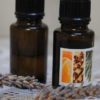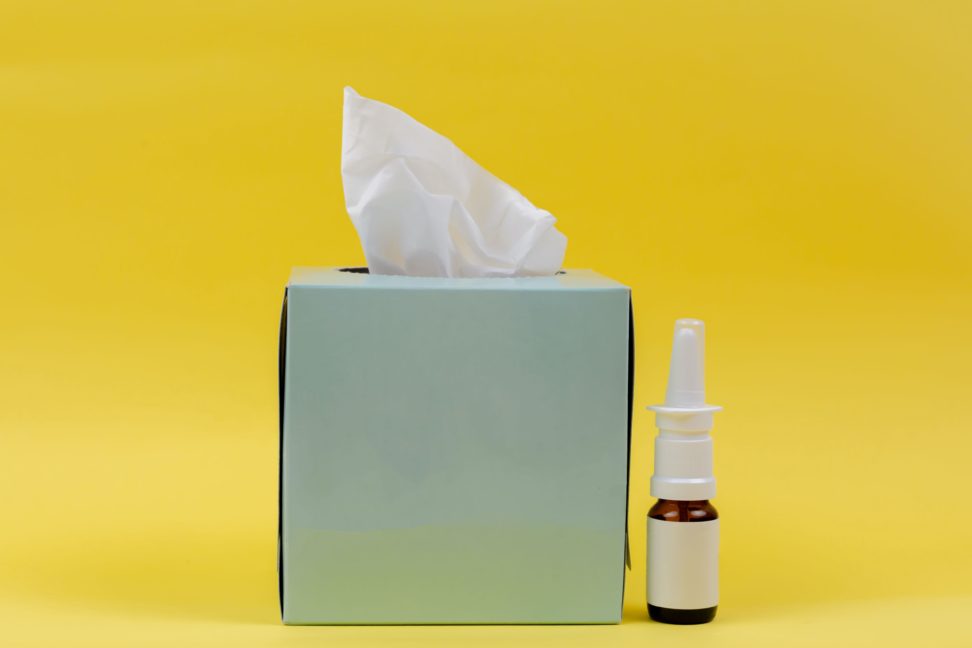For many, seasonal allergies (also called allergic rhinitis) is a yearly battle. This inflammatory response “affects 5.2 million of the children population and 19.2 million of the adult population,” according to the Asthma and Allergy Foundation of America (AAFA).
The AAFA also states that, “types of indoor and outdoor allergies include sinus swelling, seasonal and returning allergies, hay fever and nasal allergies. Many people with allergies often have more than one type of allergy. The most common indoor/outdoor allergy triggers are: tree, grass and weed pollen, mold spores, dust mites, cockroaches, and cat, dog and rodent dander.”
Avoiding that Allergy Trigger for You, Your Family … and … Your Guests
Staying healthy is about being aware of our bodies, including identifying and minimizing triggers over time. With allergies, we want to lessen the reaction so you can feel better. Before we move further, remember the following tips are useful even if you don’t have allergies (lucky you!). Certainly, a guest or a family member does and you want to help them avoid the discomfort.
For those with allergies, if you’re still trying to figure out what specifically is bothering you, watch for patterns. For example, maybe you notice that every time you dust, you have a terribly stuffy head the next day or maybe you notice that every springtime walk ends with itchy eyes. You could have genetic tendencies toward certain triggers; ask family members if they’re available and willing to share about their allergy history. (As always, share your observations with your naturopath or health practitioners.)
And with allergies, comes inflammation. Our goal is to avoid or lower triggers and related inflammation from allergies.
Ideas for Minimizing Allergy Response
Sticky pollen from trees, weeds, and grass fly through the air. It enters your nose and hits your eyes — and the itch is on! You might go inside, but that pollen landed on your clothes, skin, and hair and it continues to surround and irritate you. Because pollen can stick on you, consider following a pollen/allergy forecast through your local news or a website like Weather.com. When there are high numbers of a specific pollen that bother you, consider using these tips.
- Modify your routine to avoid the allergy as much as possible/reasonable, like doing yoga indoors instead of the evening walk.
- Consider closing window and doors to decrease the amount of outdoor allergens from coming indoors.
- Use a true-type HEPA filter to filter pollen as well as indoor allergies, like dust and pet dander. I use Blue Air filtration for my house, but there are so many great filtration systems out there! Do your research for the one that fits you best.
- Upgrade your vacuum. If you have an older or ineffective machine that just moves dirt around and sprays dust, it’s probably time to upgrade. (Bonus tip: vacuum and dust the day before your allergy-prone friend visits. This will give the air-born allergies time to settle … especially if you have a vacuum that’s not very effective. Vacuuming and dusting right before someone arrives can actually stir up more irritants.)
- Change to a no-shoe home to reduce the amount of pollen, dirt, and debris that enters your indoor space. Plus, you’ll be surprised how much less cleaning you’ll need to do if you have a no-shoes-in-the-house rule. (Need to wear shoes for support? Switch to indoor shoes when you return home.)
- Start taking local honey. The studies are limited but there’s a strong theory that incorporating honey into your diet, which has been produced by bees that interact with the local plants and trees, helps a person’s body build some level of tolerance to local pollen.
- Try essential oils, like doTERRA.
- Use a nasal rinse to remove extra allergies and irritants.
- Remove pollen from your hair, body, and clothes by taking a shower when returning indoors or before going to bed. At minimum, during high pollen season, consider changing clothes when you return home, because if you leave irritants in your nose or on your clothes, you’re going to continue the reaction and inflammation.
- Reduce other indoor irritants and get rid of toxins in your home. Scan through this previous blog about indoor toxins for a refresher. But it’s easy to remember that when you’re already experiencing a reaction from say tree pollen, adding more chemicals to your indoor environment can increase your inflammation and continue your discomfort. Now go unplug those artificial air fresheners.
- Create a regular cleaning routine to remove allergies from your home. And clean smart! The National Eczema Association recommends for those who need it to “wear rubber gloves and a protective mask while cleaning. This way, you’ll protect your skin from harsh cleaners and avoid breathing in toxins (which you should get out of your home immediately!) or airborne dust and mold.” I also like how this article points out the often-forgotten allergies, like that mold in the shower! It might be time to purchase a shower squeegee. I squeegee my shower every time I get out of the shower and then wipe it down with a Norwex cloth!
- Support your immune system. Vitamin C is recommended for allergies. It is a natural and powerful antihistamine. If you are wondering where to get a good vitamin C, check out my site at Wellavate where you can purchase your supplements at a great discount!
- And remember, part of maintaining your immune system (and keeping allergy reactions down) is keeping up with your exercise. You’ll increase blood flow, remove toxins through sweating, lift your mood, burn extra sugars, etc. A healthy immune system means we’re better able to handle inflammation when it arises.
- Consider trying acupuncture. Linking again to Natural Remedies for Allergies, “Although acupuncture has been used for allergy treatment, there have been no large, randomized controlled trials to verify its effectiveness. However, a large systematic review looked at several studies on the effects of acupuncture on allergic rhinitis. The results suggested acupuncture can improve nasal symptoms for people who have allergies, but the reason for this improvement wasn’t clear. The procedure was found to be safe and without adverse effects.”
- Remove foods that cause inflammation. For example, milk can be a subtle irritant, creating more mucus/drainage and even causing skin reactions. Once you know about a food allergy, remove or minimize it. Talk with your health practitioner/doctor about anything you want to add or include in your diet. A quick note, my husband had terrible allergies when we first met. He snored at night, he carried a Kleenex box around with him blowing his nose all the time and he had a lot of mucus drainage. All his life, he had milk with meals and as he got older, he loved himself a good beer in the evening. For a time, he started drinking wine with me instead of beer and we had cut out milk. All of a sudden, he was no longer snoring and he didn’t have the congestion anymore. We realized he had a food sensitivity to beer and milk only worsened his congestion. He still had allergies but his symptoms were 50 – 70% better!! Never underestimate the foods you eat and how your body reacts!
To learn more about reducing toxins in your home, watch my recent video presentation with guest speaker Sharon Helms. And as always, send me a note or give me a call if you have more questions.



![z31[1]](https://simplywholebydevi.com/wp-content/uploads/2018/06/z311-100x100.jpg)












